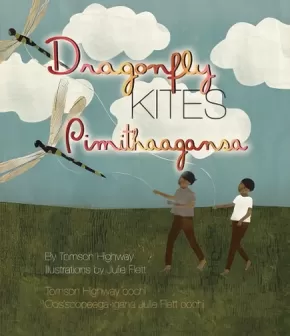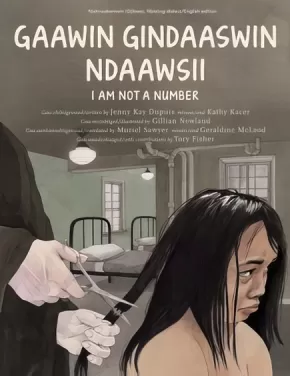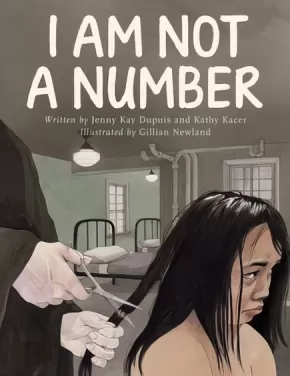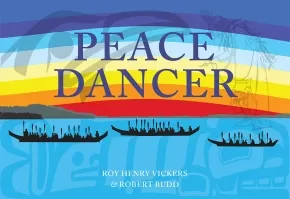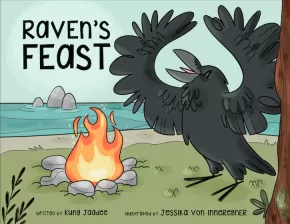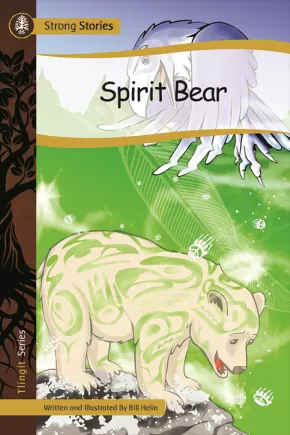
First Nations
226
-
240
of
324 Results;
Sort By
Go To
of 22
Dragonfly Kites
$14.95
Artists:
Format:
Paperback
Text Content Territories:
Indigenous Canadian; First Nations; Cree (Nehiyawak);
ISBN / Barcode: 9781897252642
Synopsis:
Synopsis:
Dragonfly Kites is the third book in Tomson Highway's magical Songs of the North Wind trilogy. Like Fox on the Ice and Caribou Song, it has a bilingual text, written in English and Cree. And once again Tomson Highway brilliantly evokes the very essence of childhood as he weaves a deceptively simple story about the power of the imagination.
Joe and Cody, two young Cree brothers, along with their parents and their little dog Ootsie, are spending the summer by one of the hundreds of lakes in northern Manitoba. Summer means a chance to explore the world and make friends with an array of creatures, But what Joe and Cody like doing best of all is flying dragonfly kites. They catch dragonflies and gently tie a length of thread around the middle of each dragonfly before letting it go. Off soar the dragonflies into the summer sky and off race the brothers and Ootsie too, chasing after their dragonfly kites through trees and meadows and down to the beach before watching them disappear into the night sky. But in their dreams, Joe and Cody soar through the skies with their kites until it's time to wake up.
Reviews
"Unlike most fiction, Dragonfly Kites does not follow a standard plot line. Like the dragonfly kites that the boys follow, the plot simply glides along until the boys wake up from their dream. This is appropriate due to the significance the illustrations play in this picture book, as well as the age of the intended audience. Readers are not overwhelmed by the storyline and are free to appreciate the accompanying illustrations. The illustrations in Dragonfly Kites act as an extension of the story. The pictures in the book are colourful, beautiful, and have an austere, stark quality. This is consistent with other works produced by award-winning illustrator Julie Flett. This style suits the story as, aside from the nature that surrounds around them, Joe and Cody are depicted as being by themselves. While they live with the parents, their adventures occur when their parents are fishing without them. The full-page illustrations demonstrate the vast space that surrounds the boys." — CM Magazine
"At once a celebration of heritage, the wilderness, and imagination, this book is a breath of fresh northern air." — Kirkus Reviews
Educator & Series Information
This is the third book in the Songs of the North Wind series, a dual-language (English and Cree) series about two young Cree boys.
This book is available in French/Cree: Les libellules cerfs-volant/Pimithaagansa
Additional Information
32 pages | 9.26" x 10.70"
Gaawin Gindaaswin Ndaawsii / I Am Not A Number
$14.95
Artists:
Format:
Paperback
Text Content Territories:
Indigenous Canadian; First Nations; Anishinaabeg; Ojibway;
ISBN / Barcode: 9781772600995
Synopsis:
Synopsis:
Dual language edition of powerful children's book about residential school experience reflects Indigenous language revitalization.
The dual language edition, in Nishnaabemwin (Ojibwe) Nbisiing dialect and English, of the award-winning I Am Not a Number. When eight-year-old Irene is removed from her First Nations family to live in a residential school she is confused, frightened, and terribly homesick. She tries to remember who she is and where she came from, despite the efforts of the nuns who are in charge at the school and who tell her that she is not to use her own name but instead use the number they have assigned to her. When she goes home for summer holidays, Irene's parents decide never to send her and her brothers away again. But where will they hide? And what will happen when her parents disobey the law? Based on the life of co-author Jenny Kay Dupuis’ grandmother, I Am Not a Number is a hugely necessary book that brings a terrible part of Canada’s history to light in a way that children can learn from and relate to.
Reviews
"Residential and boarding school stories are hard to read, but they're vitally important... books like I Am Not a Number should be taught in schools in Canada, and the U.S., too."— Debbie Reese, American Indians in Children's Literature
"It’s important to teach children about true Canadian history, but it’s not easy to talk about it in a way that children will understand. I Am Not a Number is perfect to get the conversation about residential schools started with your children. It opens the door for them to ask questions about the subject and the story is relatable in a way they can follow."— Residential School Magazine
Educator Information
Recommended Ages: 7-11
Guided Reading: V
Dual-language: Nishnaabemwin (Ojibwe) Nbisiing dialect and English.
Subjects: Character Education (Empathy, Prejudice & Tolerance); History & Social Studies (Canadian History, First Nations & Indigenous Peoples); Government & Citizenship; Reflecting Diversity
This resource is also available in English: I Am Not a Number.
This resource is also available in French: Je ne suis pas un numero.
Additional Information
44 pages | 8.50" x 11.00" | Translated by Muriel Sawyer and Geraldine McLeod with contributions by Tory Fisher
I Am Not a Number
$19.95
Artists:
Format:
Hardcover
Text Content Territories:
Indigenous Canadian; First Nations; Anishinaabeg; Ojibway;
ISBN / Barcode: 9781927583944
Synopsis:
Synopsis:
When eight-year-old Irene is removed from her First Nations family to live in a residential school she is confused, frightened, and terribly homesick. She tries to remember who she is and where she came from, despite the efforts of the nuns who are in charge at the school and who tell her that she is not to use her own name but instead use the number they have assigned to her. When she goes home for summer holidays, Irene's parents decide never to send her and her brothers away again. But where will they hide? And what will happen when her parents disobey the law? Based on the life of co-author Jenny Kay Dupuis’ grandmother, I Am Not a Number is a hugely necessary book that brings a terrible part of Canada’s history to light in a way that children can learn from and relate to.
Awards
- 2018 Red Cedar Award for Information Book Winner
- 2018 Hackmatack Award Winner
Reviews
"Residential and boarding school stories are hard to read, but they're vitally important... books like I Am Not a Number should be taught in schools in Canada, and the U.S., too."— Debbie Reese, American Indians in Children's Literature
"It’s important to teach children about true Canadian history, but it’s not easy to talk about it in a way that children will understand. I Am Not a Number is perfect to get the conversation about residential schools started with your children. It opens the door for them to ask questions about the subject and the story is relatable in a way they can follow."— Residential School Magazine
"[A] powerful teaching tool that brings a terrible part of Canada’s history to light in a way that children can learn from and relate to. It is written in simple language and told in a way that will stimulate conversations about residential schools and the traumatic effects they have had on generations of First Nation families and communities. ... beautifully illustrated by Gillian Newland. She captures the somber mood of the school, the anguish of the children, the severity of the nuns and the desperation of the family. Students can easily empathize with Irene and her brothers as well as their parents as they try to imagine how they would feel or act in a similar situation." — Alberta Native News, December 2016
"Endless cross-curricular connections can be made using this story. But the most powerful aspect of this book is that it will open a dialogue, one that Justice Murray Sinclair spoke of as head of the Truth and Reconciliation Commission, a dialogue that needs to take place for reconciliation to happen." — ETFO Voice
Educator Information
Recommended Ages: 7-11
Guided Reading: V
This resource is also available in a dual-language format (English and Nishnaabemwin (Ojibwe) Nbisiing dialect): Gaawin Gindaaswin Ndaawsii / I Am Not A Number.
This resource is also available in French: Je ne suis pas un numero
Additional Information
32 pages | 8.50" x 11.00"
I Can't Have Bannock But The Beaver Has A Dam
$12.00
Artists:
Format:
Paperback
Text Content Territories:
Indigenous Canadian;
ISBN / Barcode: 9781553796626
Synopsis:
Synopsis:
A boy patiently listens to his mother's reasons for not making bannock-all the result of a beaver's need to make a dam.
Includes a bannock recipe!
Reviews
"I Can't Have Bannock But the Beaver Has a Dam is written in prose. It begins with a little boy asking his mother if he can have some bannock. She says no and tells him why. As for all little boys, mother's answer only offers material for another question. So the book's story is built on this question-answer exchange between the two. Each time the mother answers, she gives all of the information in the previous answer plus a new piece of information, so we see the picture expanding for the boy. The book would be a good teaching tool for the elementary teacher, especially for those in native and northern communities where bannock and power failures are a part of everyday life. It is recommended for all elementary school libraries." - Sharon A. McLennan McCue, CM Magazine
Educator Information
Recommended Grades: K-3
Additional Information
32 pages | 9.00" x 11.00" | New Edition
I Know I Am Precious and Sacred
$12.00
Format:
Paperback
Text Content Territories:
Indigenous Canadian;
ISBN / Barcode: 9780992151645
Synopsis:
Synopsis:
I Know I Am Precious and Sacred follows a conversation between a child and loving grandfather as they talk about what the words “precious” and “sacred” mean. These culturally integral concepts are explained in simple, practical terms, so that Little Ones may recognize how they affect relationships in families and communities. Readers and listeners are invited to explore how these ancestral teachings impact their families and communities.
I Know I Am Precious And Sacred is a soft-cover children’s book, geared towards readers and listeners ages 5 to 10 years old, but holds out important truths for their adults as well.
Educator & Series Information
This is the second book in the Precious and Sacred series.
Reading level: K-3.
Additional Information
32 pages | 8.00" x 8.00"
Authenticity Note: This book has received an Authentic Text label because it was written by Debora Abood with the support and participation of Elders from the Victoria Native Friendship Centre.
Peace Dancer
$19.95
Text Content Territories:
Indigenous Canadian; First Nations; Tsimshian (Ts'msysen);
ISBN / Barcode: 9781550177398
Synopsis:
Synopsis:
The children of the Tsimshian village of Kitkatla love to play at being hunters, eager for their turn to join the grown-ups. But when they capture and mistreat a crow, the Chief of the Heavens, angered at their disrespect, brings down a powerful storm.
The rain floods the Earth and villagers have no choice but to abandon their homes and flee to their canoes. As the seas rise, the villagers tie themselves to the top of Anchor Mountain, where they pray for days on end and promise to teach their children to value all life. The storm stops and the waters recede. From that point on, the villagers appoint a chief to perform the Peace Dance at every potlatch and, with it, pass on the story of the flood and the importance of respect.
With eighteen new illustrations from Roy Henry Vickers and exceptional narrative, Peace Dancer will delight readers of all ages and add to the collection of global flood stories.
Reviews
"Parents and teachers will enjoy sharing Peace Dancer with children. Highly recommended." — Dr. Gregory Bryan, CM Magazine, October 2016
Educator & Series Information
This book is part of the Northwest Coast Legends series.
This book is part of the Northwest Coast Legends series.
Other books in this series include:
Raven Brings the Light
Cloudwalker
Orca Chief
Peace Dancer
Raven Brings the Light
Cloudwalker
Orca Chief
Peace Dancer
Recommended for ages 3 to 6.
Additional Information
40 pages | 12.00" x 8.25"
Raven Series Bundle
 $107.73 $119.70
$107.73 $119.70

Text Content Territories:
Indigenous Canadian; First Nations; Kwakwaka'wakw (Kwakiutl);
ISBN / Barcode: 9781771745888
Synopsis:
Synopsis:
The Raven Series is a set of six books written for the emergent reader and learner. Each book focuses on a specific learning intention that builds on strengthening learning with the support of an adult.
The titles and their learning intentions are:
- Raven and the Box: promotes an oral retell
- Raven and Duck: basic concepts
- Raven and Frog Count: number recognition
- I Spy Raven: rhyme and perspective
- Raven Sings the ABC's: letter recognition, vocabulary building
- Raven Makes a Necklace: colours and patterns
Educator Information
This resource is also available in French HERE!
Additional Information
ISBN: 9781771745888
Raven Series: I Spy Raven (Big Book)
 $19.95
$19.95

Artists:
Format:
Coil Bound
Text Content Territories:
Indigenous Canadian; First Nations; Kwakwaka'wakw (Kwakiutl);
ISBN / Barcode: 9781771741545
Synopsis:
Synopsis:
Watch as six little insects keep an eye on Raven as he settles in to go to sleep. The sky darkens and the stars come out only to reveal something very big at the end.
Educator & Series Information
This book is part of the Raven Series, a set of six books written for the emergent reader and learner. Each book focuses on a specific learning intention that builds on strengthening learning with the support of an adult.
A Little Note about Rhyming and Perspective:
Learning rhyme is a foundational skill and this book provides opportunity to explore rhythm, rhyme and visual perspective. A learner’s ability to recognize words that rhyme will support them as they begin to learn word families later on. A simple word family is the “at” family: bat, cat, hat, mat etc. When a learner can recognize the rhyming sounds, or words, they can begin to anticipate the text. As well, a learner’s ability to understand visual perspective allows them to understand the storyline deeper. The visual perspective changes under a magnifying glass.
This resource is available in French: Je vois Corbeau
Note: French book dimensions differ.
Additional Information
16 pages | Dimensions: 10" x 14" | ISBN: 9781771741545
Raven Series: Raven and Duck (Big Book)
 $19.95
$19.95

Artists:
Format:
Coil Bound
Text Content Territories:
Indigenous Canadian; First Nations; Kwakwaka'wakw (Kwakiutl);
ISBN / Barcode: 9781771741569
Synopsis:
Synopsis:
Raven and Duck are good friends. They like to play together outside in the summer sun but most of what they do is opposite to the other.
Educator & Series Information
This book is part of the Raven Series, a set of six books written for the emergent reader and learner. Each book focuses on a specific learning intention that builds on strengthening learning with the support of an adult.
A Little Note about Opposites:
Learning opposites is a foundational skill. So many functions of our daily lives are around sorting and categorizing and understanding opposites is a great beginning. As well, knowing what opposites are supports a young learner in both comprehension and vocabulary. Understanding a storyline that describes something big and something small will support comprehension. With the addition of opposite words in a young learner’s vocabulary, they can now add a description to things. As an example, the beginning stages of use may be the big boat and the small boat. As language progresses it may turn to the large boat and the little boat. At an even deeper progression, it may turn to the humongous boat and the tiny boat.
This resource is available in French: Corbeau et Canard
Note: Book dimensions differ in French.
Additional Information
16 pages | Dimensions: 10" x 14" | ISBN: 9781771741569
Raven Series: Raven and Frog Count (Big Book)
 $19.95
$19.95

Artists:
Format:
Coil Bound
Text Content Territories:
Indigenous Canadian; First Nations; Kwakwaka'wakw (Kwakiutl);
ISBN / Barcode: 9781771741538
Synopsis:
Synopsis:
Join Raven and Frog as they both count to ten in their own way. Raven teaches one to ten in rhyme and with a focus on number recognition. Frog teaches one to ten with visual supports of number representation.
Educator & Series Information
This book is part of the Raven Series, a set of six books written for the emergent reader and learner. Each book focuses on a specific learning intention that builds on strengthening learning with the support of an adult.
A Little Note about Counting:
Learning to count is a foundational skill and our world is full of numbers. Young learners will learn early on in life that they can have one candy, not ten. In order to support the learning we can teach first what the numbers 1 to 10 look like while counting/naming them. After many practises counting/naming, we can then teach the amount of each number. For example, we can show the learners; I can hold one cracker in my left hand and two crackers in my right hand. Last, we can show number representation in a pattern, like the number patterns on dice. Of course, this is only the beginning of discovering that our world is full of math but this is such a great start for any young learner.
This resource is available in French: Corbeau et Grenouille comptent
Note: French book dimensions differ.
Additional Information
16 pages | Dimensions: 10" x 14" | ISBN: 9781771741538
Raven Series: Raven and the Box (Big Book)
 $19.95
$19.95

Artists:
Format:
Coil Bound
Text Content Territories:
Indigenous Canadian; First Nations; Kwakwaka'wakw (Kwakiutl);
ISBN / Barcode: 9781771741521
Synopsis:
Synopsis:
Based on a traditional story, Raven and the Box is a simple storyline. With each action that Raven makes you can play along with your own actions.
Educator & Series Information
This book is part of the Raven Series, a set of six books written for the emergent reader and learner. Each book focuses on a specific learning intention that builds on strengthening learning with the support of an adult.
A Little Note about Retelling:
Learning to tell and retell stories is a foundational skill. Oral retells promote comprehension and build vocabulary capacity. This story allows actions to be performed as it is being told. Actions can sometimes support the retelling of a storyline. Invite learners and their families to come in and share one of their own traditional family stories.
This resource is available in French: Corbeau et la boîte
Note: French book dimensions differ.
Additional Information
16 pages | Dimensions: 10" x 14" | ISBN: 9781771741521
Raven Series: Raven Makes a Necklace (Big Book)
 $19.95
$19.95

Artists:
Format:
Coil Bound
Text Content Territories:
Indigenous Canadian; First Nations; Kwakwaka'wakw (Kwakiutl);
ISBN / Barcode: 9781771741552
Synopsis:
Synopsis:
Follow Raven as he flies around looking for coloured beads to make a necklace. The beads he finds are different shapes and colours.
Educator & Series Information
This book is part of the Raven Series, a set of six books written for the emergent reader and learner. Each book focuses on a specific learning intention that builds on strengthening learning with the support of an adult.
A Little Note about Shapes and Colours:
Sorting by shapes and colours is a foundational skill. Our world is full of shapes and colours! Young learners strive to make sense of their surroundings and look to identify shapes and colours either in real life or through multimedia. Once learned a young learner can then sort and categorize many things by shape or colour.
This resource is available in French: Corbeau fait un collier
Note: French book dimensions differ.
Additional Information
16 pages | Dimensions: 10" x 14" | ISBN: 9781771741552
Raven Series: Raven Sings the ABC's (Big Book)
 $19.95
$19.95

Artists:
Format:
Coil Bound
Text Content Territories:
Indigenous Canadian; First Nations; Kwakwaka'wakw (Kwakiutl);
ISBN / Barcode: 9781771741514
Synopsis:
Synopsis:
Follow Raven as he introduces each letter of the alphabet! Have fun naming each of the images for each letter.
Educator & Series Information
This book is part of the Raven Series, a set of six books written for the emergent reader and learner. Each book focuses on a specific learning intention that builds on strengthening learning with the support of an adult.
A Little Note about the Alphabet:
Learning the alphabet is a foundational skill and learning through song is a wonderful way to learn! In hopes to eliminate confusion of learning to identify letters, we have typeset the letters in a specific manner. For example, L M N O P is not one letter and for young learners can be mistaken as such if not broken up. As you are singing the song slowly together, pointing at each letter will support young learners significantly. Notice that we pluralize alphabet to indicate there are many kinds.
Each letter of the alphabet in the book has a corresponding picture. Taking the time to talk about each picture, over several reads, will support building vocabulary. Some of the pictures are from other Raven books to help learners make connections from book to book.
This book is available in French: Corbeau chante la chanson de l’alphabet
Note: French version dimensions differ.
Additional Information
16 pages | Dimensions: 10" x 14" | ISBN: 9781771741514
Raven's Feast
$16.99
Artists:
Format:
Paperback
Text Content Territories:
Indigenous Canadian; First Nations; Haida;
ISBN / Barcode: 9780993869464
Synopsis:
Synopsis:
After the Raven (Yaahl) had finished creating the world; he realized that he was lonely. So he invited the whole world to join him in Haida Gwaii for the greatest feast you could ever imagine. At the end of the Feast each person, from all 4 sacred directions, was given a special gift that would change their lives forever!
Educator Information
Recommended for grades 2 to 5.
This book shares the message that every person is unique and has something special to share with the world. Raven’s Feast is perfect for schools and other places of learning as its message inspires children to follow their hearts and see themselves as unique and important.
Author Kung Jaadee is a well-loved traditional storyteller, singer and drummer who delights audiences across Canada. She has a passion for teaching Xaad Kil/Haida language and sharing her culture with people of all ages. She has performed traditional Raven legends and personal stories for over twenty-five years.
This resource is also available in French: Le Festin du Corbeau
Additional Information
40 pages | 11.00" x 8.50"
Strong Stories Tlingit: Spirit Bear
 $9.95
$9.95

Artists:
Format:
Paperback
Text Content Territories:
Indigenous American; Alaska Native; Tlingit; Indigenous Canadian; First Nations; Tlingit;
ISBN / Barcode: 9781771741095
Synopsis:
Synopsis:
One spring day the forest animals gathered with Mother Bear to meet her two new cubs. As they emerged from the den, Raven gifted a sacred white feather (a symbol of peace and harmony) to one of them. This beautifully illustrated story of a little spirit bear is written in lyrical text and will appeal to readers of all ages.
Educator & Series Information
Spirit Bear is part of the Strong Stories: Tlingit series. Strong Stories focus on different First Nation territories from across Canada and the United States. These stories reflect the belief that our stories are the roots of our people, our lands and our cultures. It is from our stories that we grow and become strong and proud.
This resource is also available in French: Ours Esprit.
Additional Information
16 pages | 6.00" x 9.00" | ISBN: 9781771741095
Sort By
Go To
of 22

